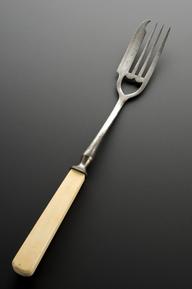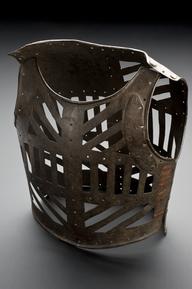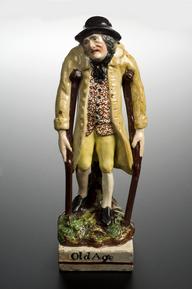







Miniature, prototype model of mechanical arm, made by George Thomson, Edinburgh, 1919
George Thomson was a gas fitter in Edinburgh who invented a mechanical aid for men who had lost both arms due to injuries received in the First World War. If both were lost high at the shoulders, a conventional artificial arm could not be fitted. This was an extremely rare injury even among the 41,000 British servicemen who lost limbs during First World War.
Thomson was one of a large number of private individuals prompted to suggest or in some cases produce new inventions in an attempt to deal with medical challenges thrown up by the war. This is his prototype. In his full-size version, tools, including cutlery, a cup holder and scissors, were clipped on to the mechanical arm, which was then attached to an ordinary dining table. The user could operate the arm and tools with foot pedals placed underneath. The full-size model was made the same year and a small number were produced in subsequent years. They were often referred to as ‘feeding tables’.
Details
- Category:
- Orthopaedics
- Collection:
- Sir Henry Wellcome's Museum Collection
- Object Number:
- A602415
- Materials:
- frame, wood and arm, iron
- Measurements:
-
overall: 300 mm x 365 mm x 230 mm,
- type:
- model
- credit:
- Thomson, G.




